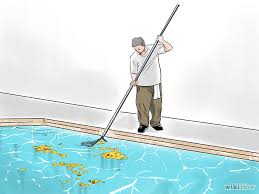
The greatest concern poolside is the potential cross-infection from one person to another. There is also the build up of body oil or grease, which can make the surface slippery and unsafe. It is essential that any cleaning work not only destroys bacteria and removes body oil and grease, but also leaves no risk to the health and safety of people as they walk around the poolside.
Any outside dirt that gets into the pool – either from shoes around a leisure or outdoor pool, or via changing room floors – will add to the problem of effective water treatment. Conversely, using the wrong cleaners (especially those containing unsuitable surfactants) can add further to this burden, as well as affecting disinfection, pH control and chemical monitoring. No cleaning should be undertaken without a full awareness of the water treatment system, the cleaning agent, and how the two might interact. The manufacturer should be a source of information on this.
Cleaning around the pool is tricky, as cleaning products must not get into the pool water. This is particularly difficult if the pool is deck-level (the pool water level with the surround). Cleaning agents and the residue from cleaning can cause severe problems if they get into pool water where they may affect automatic controls, give false testing results and cause troublesome chemical reactions.
Some pools are designed so that cleaning residue can be kept away from the deck-level transfer channel. But it is vital for all staff to understand that the transfer channel – even if it sometimes referred to as a drain – does not go to waste, but back into the pool water circulation. Cleaning products or their residue must not go into the channels and outlets where they can mix with pool water– unless it is designed for this purpose (see later).